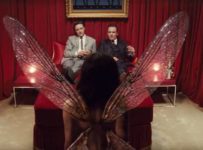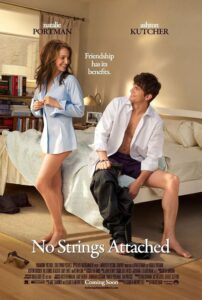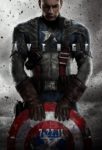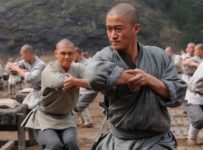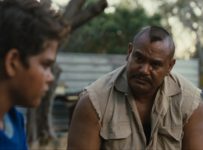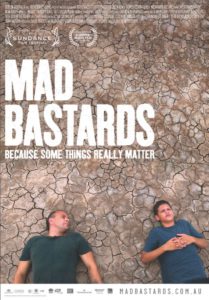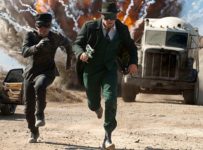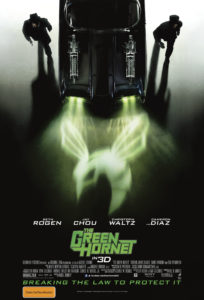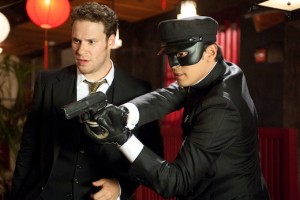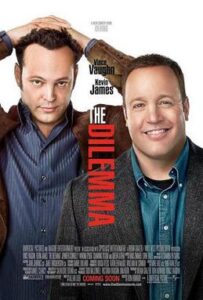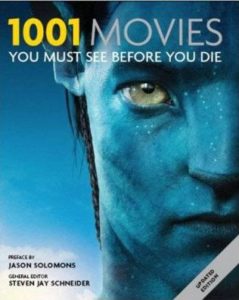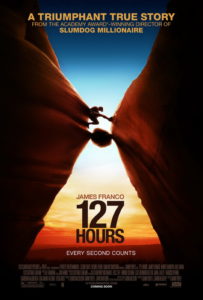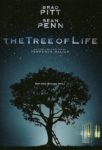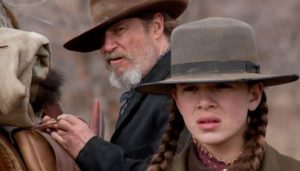
2011 has already been hotting up as the year of the superhero film, with some of the biggest names in the business set for a remake, reboot or sequel. Indeed, it’s only February, and we’ve already had one blockbuster comic book adaptation in the form of Michel Gondry’s The Green Hornet. As we saw from the Super Bowl commercials last week, the battle will continue throughout the year as Captain America: The First Avenger fights for freedom, the Green Lantern polices the galaxy and Thor brings down the mighty hammer of Odin. With so many to see, how are our anticipation levels reading for these fabulous films of 2011?
X-Men: First Class
Today, Twentieth Century Fox released the first trailer for the highly anticipated X-Men: First Class. Although this will be the fourth film in the franchise to date – following X-Men, X2: X-Men United, X-Men: The Last Stand and the atrocious Wolverine – this prequel has got fans in an uncanny buzz. Director Matthew Vaughn, who has already popped his comic cherry on Kick-Ass and its forthcoming sequel, should bring back the sense of frenetic energy that X-fans have been craving since Bryan Singer’s high-octane second installment in 2003.
Then there’s the cast: James McAvoy (Gnomeo & Juliet) takes on the role of a young Professor Charles Xavier, a role made famous by the venerable Patrick Stewart. Meanwhile, Michael Fassbender (Inglourious Basterds) has his own big shoes to fill replacing Sir Ian McKellen as Magneto. The awarded actors are certainly up to the task, and boy are they accompanied by a terrific cast: Kevin Bacon, January Jones, Australia’s Rose Byrne, Nicholas Hoult (A Single Man), Jennifer Lawrence and Oliver Platt just to name a few. If that’s not enough to convince you, then script is co-written by Kick-Ass scribe Jane Goldman. You will be seeing this film.
As you can see from the trailer itself, this is an origin of the famous team set during the Cold War era of the 1960s, complete with Cuban Missile Crisis, younger versions of familiar characters and a few new ones to boot. Most notably, Golden-Globe nominee January Jones (Mad Men) joins the cast as Emma Frost, another telepath with the ability to create thought projections. There also seems to be some kind of fairy creature that Charles and Erik visit in what can only be described as a David Lynch-style red room. If Michael J. Anderson turns up, it could be the greatest film ever made. (X-Men: First Class is out in Australia on 2 June, 2011 from Twentieth Century Fox).
Green Lantern
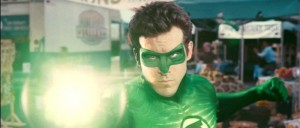
One of Warner Bros./DC’s great hopes for the year didn’t run a spot during the Super Bowl, possibly saving themselves the $3 million price tag that goes along with it. As was the case with the Facebook-launched X-Men: First Class trailer, when the Green Lantern trailer launched online in November last year, it caused quite the fanboy stir.
Although never a major mainstream player on the superhero front, Green Lantern has managed to get some good marketing from DC and its parent company Warner Bros. thanks to appearances in the popular Justice League animated series, and his very own direct-to-DVD animated film, Green Lantern: First Flight. The trailer to the first live-action film for the character managed to elicit a few laughs – both intentional and the unfortunate kind – thanks to the all-CGI costume the character was wearing. This has the fanboys already crying outrage, but let’s see if the company can keep the goodwill built by Batman Begins and The Dark Knight going. Fingers crossed! (Green Lantern is out in Australia from Warner Bros. on 16 June 2011).
Thor
Potentially the silliest of all the films to date, Thor is a character that traces back to Norse mythology, but Marvel adapted into a comic book back in the 1960s under Stan Lee.
The new trailer that Paramount debuted at the Super Bowl this year amps up the hammer wielding and the muscly action, but the extended version – showing much poncing about in capes with Anthony Hopkins demonstrating why he should have stayed retired – has the potential to be one of the biggest giggle-fests of 2011. Lest we forget: for every Spider-man and Iron Man, there is an Elektra or Ghost Rider. Let’s pray to mighty Odin that with seasoned thesp Kenneth Branagh behind the camera, Thor will be the former. (Thor is out in Australia from Paramount on 28 April 2011).
Captain America: The First Avenger
Marvel’s plan is to bring together most of their film characters to date – Hulk (now played by Mark Ruffalo, replacing Edward Norton, who in turn usurped Eric Bana), Thor, Iron Man and a few bit players from the respective movies – and team them all up as The Avengers in 2012. First the team needs a captain, so in the Hollywood tradition of explaining everything before it happens, we get the origin story of Steve Rogers (aka Captain America). As such, the ‘First Avenger’ bit has been strategically stuck into the title to evoke a sense of…franchising?
The first footage we saw was (you guessed it) at the 2011 Super Bowl, and we witnessed the transformation of Chris Evans (who was last seen in superhero mode in the woeful Fantastic Four sequel The Rise of the Silver Surfer), from skinny private to super soldier as part of US government experimentation in the Second World War. As with X-Men: First Class, this looks to be a period piece (rather than the Cap on Ice modern storylines), and a very cool one at that. In the short 32 second teaser, we get to see his nemesis the Red Skull, the famous US flag shield and Tommy Lee Jones. Is that not cool, or what? (Captain America: The First Avenger is out in Australia on 28 July 2011).

The Reel Bits: It’s going to be spandex city this year, with a plethora of heroes vying for your coin. Based on what we’ve seen so far, our money is on X-Men: First Class and Captain America: The First Avenger being the must-see superhero titles of 2011.
